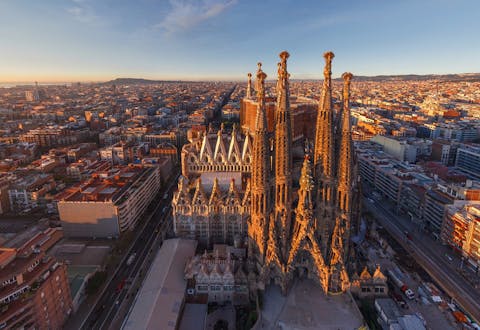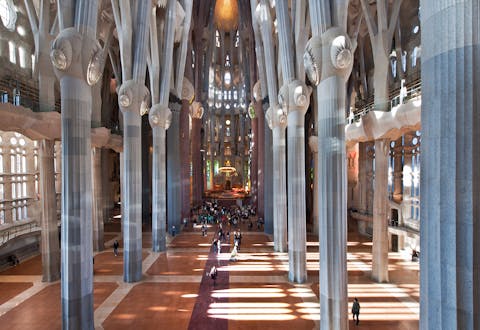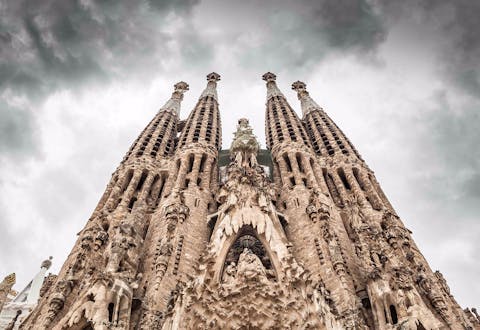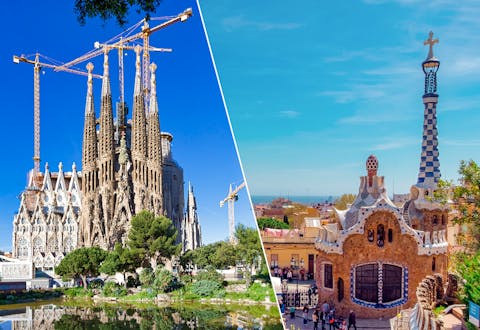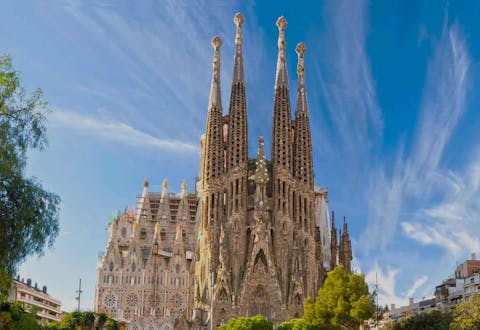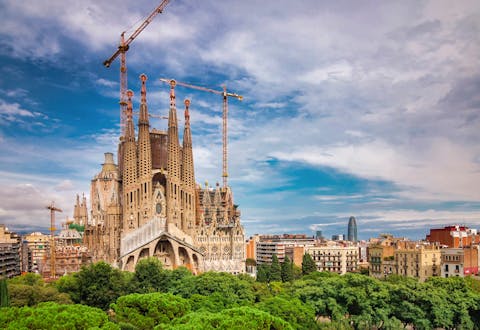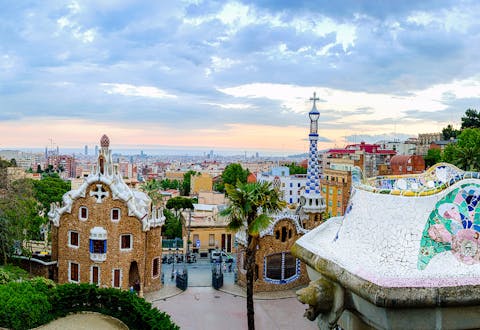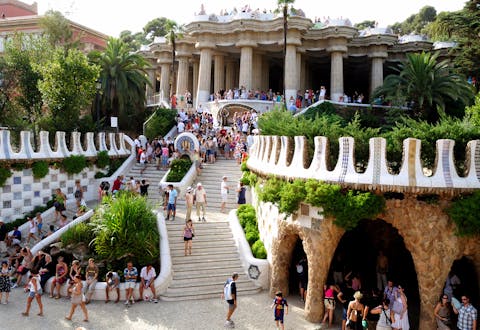Sagrada Familia. Park Güell. Casa Milà. Palau Guell. Casa Batlló. Casa Vicens. Everywhere you go in Barcelona, you will find a dash of Antoni Gaudí's magic. His work will stop you in your tracks and leave you awestruck with its rarity and grandeur.
There's no leaving Barcelona without going on a Gaudi Tour. Walking by his timeless architecture, with an expert historian guide narrating interesting lores and facts about the building is an experience of a lifetime. If you're not much of a guided tour person, you can do a Gaudi Tour in Barcelona all by yourself - a self guided Gaudi Tour!
Before you step out for the quintessential Gaudi Tour in Barcelona, here's all you need to know.
PS: Scroll all the way down for a self guided Gaudi Tour map!
Antoni Gaudí's Architecture - Style, Inspirtation & Ideology
Gaudí pioneered the Modernisme movement in Catalonia in the 20th century. The Modernisme movement started as a response to the aftermath of the Industrial revolution. The bourgeoisie class wanted to assert their culture and wanted their homes and buildings to reflect that. This style was almost poetic and used a mix of construction material with textures and contrasts. There was also a focus on applied arts and artistic work. Gaudí kick-started the movement and is known for his unorthodox architectural elements and inspiration from nature. His work inspired several other artists who transformed the entire Eixample area of Barcelona with their works.
If there was one term that could define Antoni Gaudí’s style it would be avant garde. He was always evolving as an architect and pushing ideas that were radical for the times he lived in. Through his architectural journey he was influenced by many styles including neo-Gothic, Catalan Medieval, Oriental and Islamic which he used blending in with his own style. In his later years, he started to veer towards exploring his own personal style which led to the evolution of the Catalan Modernisme.
He also started leaning towards naturalist style and began taking inspiration from nature. The curves which are predominantly found in all his works are a tribute to the natural forms which are never found in straight lines. He was always motivated by creating grand structures and had a flair for the extravagant. He also approached execution differently and used 3D models instead of drawing plans. In fact, the current construction of the Sagrada Familia is undertaken from the many models he made.
Going on a Gaudi Tour in Barcelona will give you a chance to relive his story, his unique ideology and eccentricity. Barcelona is famous on the tourist map and a good chunk of this credit is attributed to Gaudi's mind-boggling architecture that has people swooning in delight!
A Gaudí Tour in Barcelona - The Ones You Cannot Miss
Antoni Gaudí is the only architect apart from Le Corbusier to have been recognised by the UNESCO as worthy of Heritage status. Antoni Gaudí's works have been recognised as an outstanding contribution to the modern movement. These comprise of seven buildings which are spread across Barcelona and are truly a visual treat. Over the years, Gaudí's architecture in Barcelona has become synonymous with Barcelona and there is no way a visit to Barcelona is complete without a visit to his works.
Here's a list of the 12 Best of Gaudi Buildings in Barcelona one cannot miss. Make sure you have all of them on your self guided Gaudi Tour!
Embarking On A Gaudi Tour In Barcelona
Whether you squeeze in all 12 of these Gaudi's marvels or just the top 5, you're in for a visual treat. Simply click on the one you'd like to read more about and buy discounted tickets to each of Gaudi's wonders from Headout!
1. Sagrada Familia
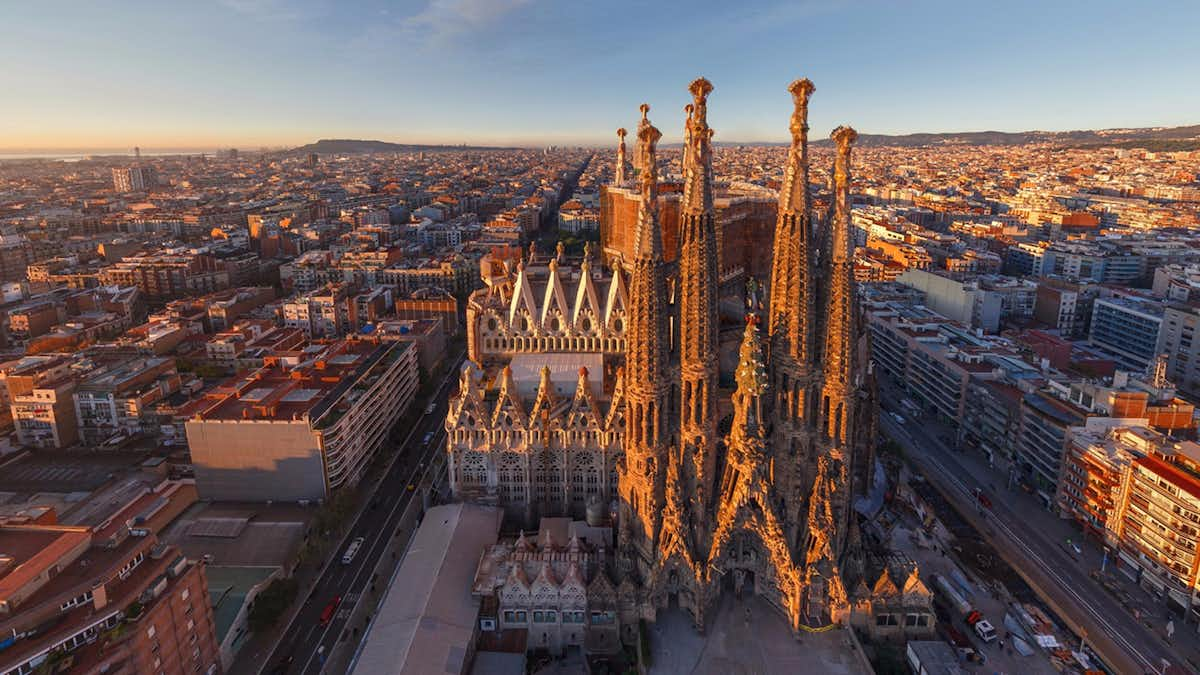
The Sagrada Familia is dedicated to the glory of Christ, and of the natural world. The Expiatory Temple of the Sagrada Familia is a church and was consecrated in 2010 by His Holiness Pope Benedict XVI. It is a grand architectural wonder designed by Gaudí, who was an ardent believer and wanted to create a place of worship that would be a testament to the glory of Christianity.
The monumental church is still is under construction and is likely to finish only in 2022, more than 140 years after the first foundation stone was laid. Gaudí was inspired by Gothic and Byzantine cathedrals, and included iconography from both Christianity and nature. You will be awestruck the moment you stand in front of the Sagrada Familia, the weirdly wonderful architecture with extreme detailing is bound to make your jaw drop!
Why You Cannot Miss It
You cannot visit Barcelona and not visit the Sagrada Familia! It’s the symbol of Barcelona across the world; this epic church building is the icon of ambition and passion. It is the shining star of Gaudí’s Barcelona, being his ultimate work of art that will stand tall for centuries. The elevated bell towers, extravagant facades, and eccentric interiors all sing the praises of God and the abundance of nature. It is also a UNESCO Heritage Site that recognises the immortal relevance of this architectural showpiece, which will continue to inspire and amaze generations to come. It’s a sight to behold and you simply cannot miss it on your Gaudí Barcelona tour.
Popular Sagrada Familia Tickets & Tour
2. Park Güell

Park Güell is the remnant of ambition that never came to fruition. It was the brainchild of Eusebi Guell, who wanted to create a housing development for the well-to-do families of Barcelona in the 1900s. The vision was to create a fully functional residential property where the residents could enjoy being close to nature on Carmel Hill. Yet, due to economic distress, it never took off completely. But what remains itself is so valuable that it was noted as a UNESCO World Heritage Site. The Park Güell remains one of Gaudí’s most remarkable creations and a must-visit stop on your Gaudí Barcelona Tour.
Why You Cannot Miss It
Park Güell is quirky and aptly iconized by the colourful salamander which is decorated with vibrant trencadis ceramic work. The entire property was planned to blend in with the nature and included a lot of organic structures in its architecture. The development was well planned as can be seen in the large market place (Hypostyle room), a huge arena now known as the Nature Square and the beautiful roadways, paths and viaducts. The mighty Dragon stairway leading to the marketplace embodies the grandeur of the place. Every detail, and nook and cranny is wonderfully designed and makes one wonder what would have it been if it was completed!
Best Selling Park Guell Tickets & Tour
3. Casa Mila
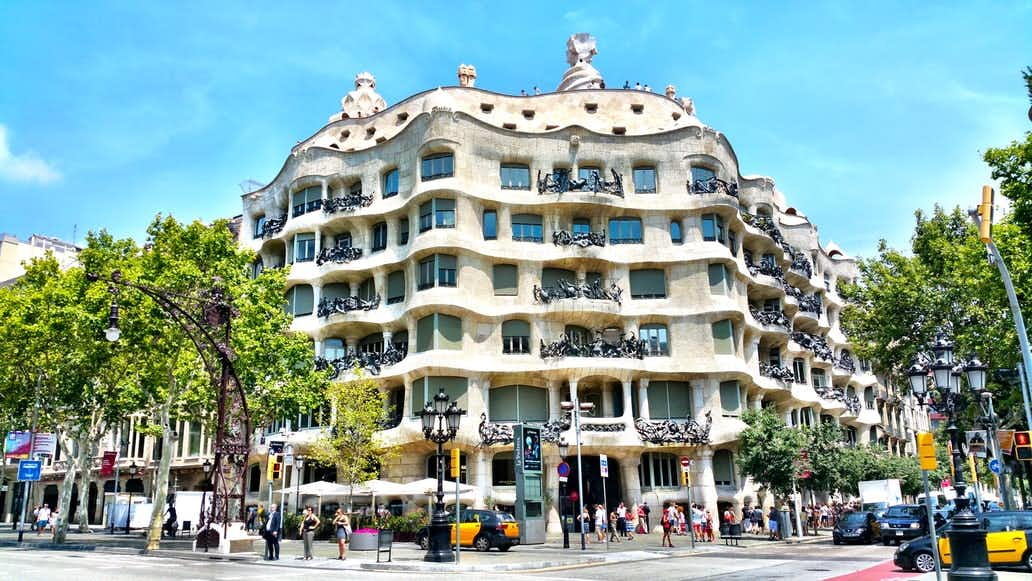
Casa Milà is Gaudí’s last signature project before he moved on to the construction of the epic Sagrada Familia. The residential development project was his last civil commission and he went all out with his creative genius in designing the building. The Casa Milà popularly is known as ‘La Pedrera’ which means ‘stone quarry’ referring to its façade which resembles an open quarry.
The premium residential building was finished in 1912 and was constructed for Pere Mila and his wife. The five floor majestic building spills over two adjacent streets and a corner. Its undulating curves and the soft creamy stone make it appear to be in constant motion with the time of the day and the seasons. Gaudí outshone himself as he managed to immortalize nature in stone through this magnificent work of art!
Why You Cannot Miss It
Casa Milà is a UNESCO Heritage Site belonging to Gaudí’s Barcelona. This building was designed at the peak of his Modernisme movement where he experimented with architectural elements and forms. He had used nature as an inspiration across all his works, but it is in Casa Milà that he has encapsulated natural and organic forms beautifully. The pattern of butterfly wings on the gates, the creeping vines on the staircases and the stunning flower motifs in the foyers - everything is inspired by nature. The interiors are designed on an open plan system where the residents could adapt and create their own living style. Even the terrace, which was never utilised as a space worthy of design, was turned into art. The chimneys, too, stand over like sentinels overlooking the city of Barcelona!
4. Casa Batlló
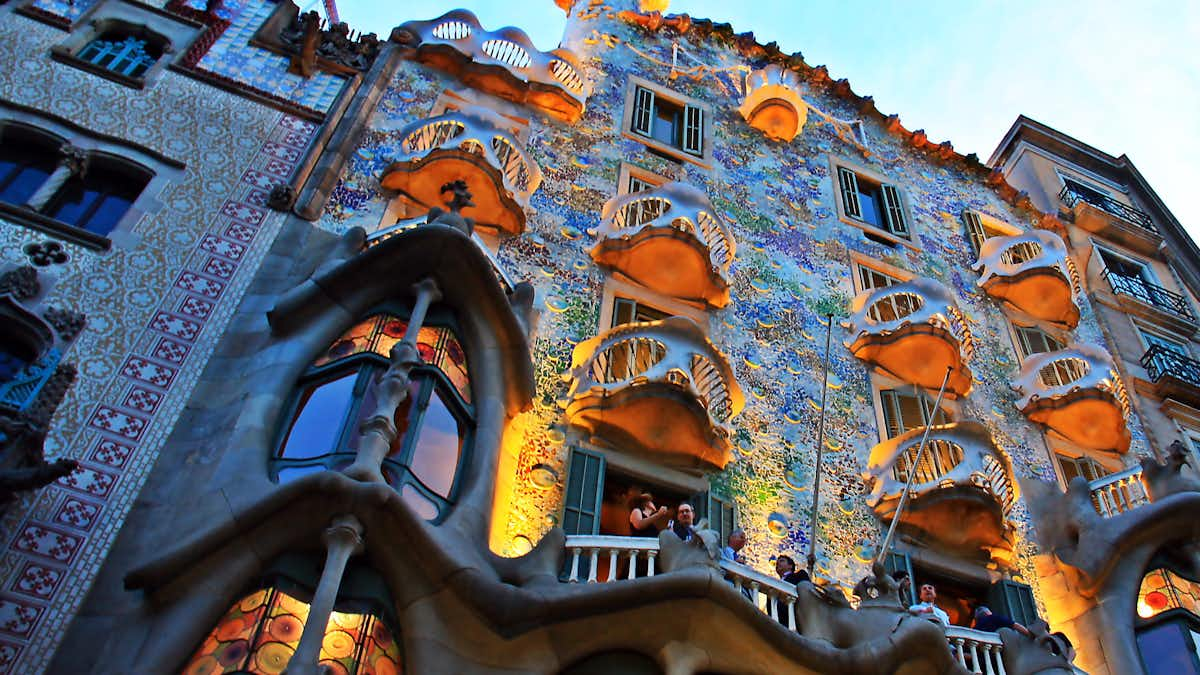
Casa Batlló is a magical architectural wonder and Gaudí’s best work at the prime of his career. He stretched the limits of imagination and creativity with this residential house, commissioned to him by textile entrepreneur Josep Batlló. Casa Batlló was renovated and not built from the scratch, which brought its own set of limitations. Yet, Gaudí created a poetic and enigmatic façade which has been likened to a painting, almost in motion. The undulating curves of the façade and the colors of the windows are awe-inspiring and mesmerize tourists.
Why You Cannot Miss It
The Casa Batlló is a UNESCO Heritage Site and is considered to be the most original of the Catalan Modernism architecture pioneered by Gaudí. The building is open to interpretation; the colourful and intense façade has been compared to the water lily paintings of Monet, as well as been called as ‘The House of Bones’ due to the hollows and columns on the rostrum. The interiors are also a work of art, the attic especially is the crowning glory and its parabolic arches are like the rib cage of an animal. Gaudí has mastered the use of natural light and a variety of materials to create this masterpiece that can only be justified with a visit in person!
Short on time?
This guided tour is what you need! The Artistic Barcelona Tour takes you to all the important works of the modernist architect Antoni Gaudi that are scattered across the city. With transportation in an air-conditioned coach and a professional multilingual guide, explore the best of Gaudi's architecture in Barcelona.
5. Casa Vicens
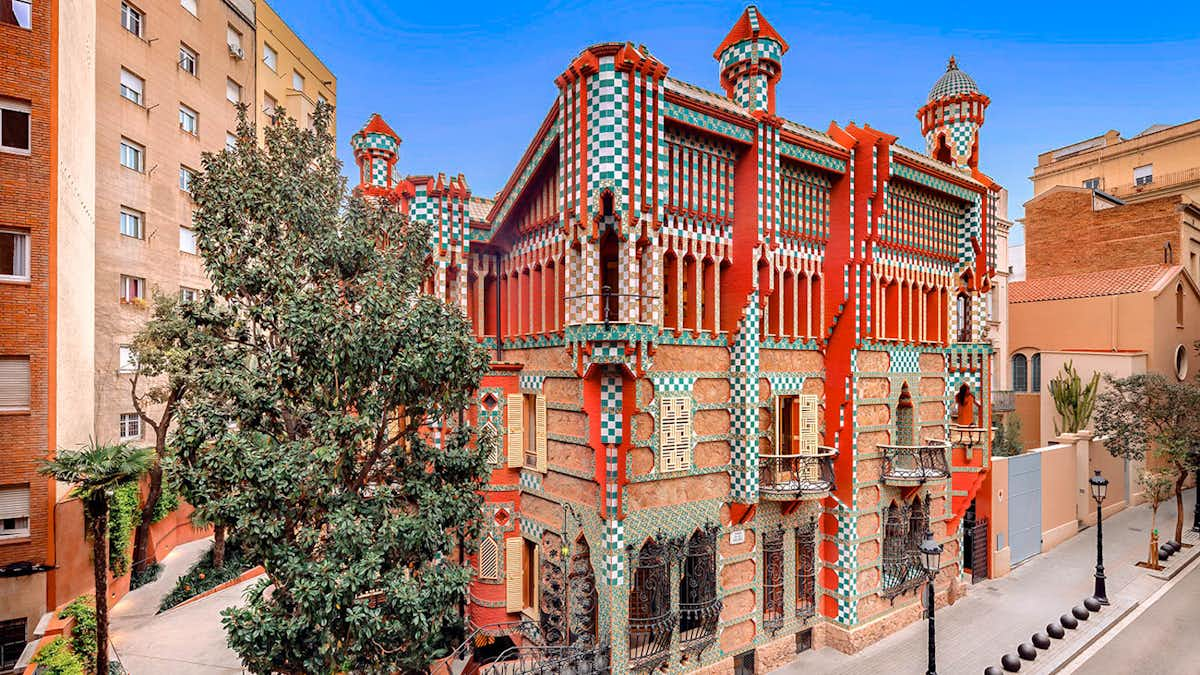
The colourful Casa Vicens was the first commissioned work by Gaudí, right after he graduated from college. Completed in 1888, the house was commissioned by Manuel Vicens Montaner, a local businessman. Casa Vicens was simple in structure but ornate in its colourful decoration, and hinted towards the future evolution of Catalan Modernism and Gaudí’s more ornate and complex works to come. The beautiful ceramic tiles are quintessential to the Casa Vicens décor and one cannot be satisfied with just a glance! The architecture is a mix of styles, including Moorish and Mudejar, influences and also uses a variety of materials like stone for the base walls, wood for the panelling, and wrought iron for the fences and railings.
Why You Cannot Miss It
The Casa Vicens is an important stop during your tour of Gaudí in Barcelona, primarily because it is where all the magic started. The house is the perfect mix of eclectic tastes and exuberance, making it the perfect summer house. It is a pleasure to walk along the exterior of the house admiring the intricate work on the tiles inspired by Islamic and Oriental art. One can also find the original wooden furniture designed by Gaudí himself, as well as a valuable collection of 32 paintings by Francesc Torrescassana. Gaudí’s obsession with dramatic terraces starts here. He created the first accessible roof in Casa Vicens , which has a beautiful cupola clad in ceramic tiles.
6. Casa de les Punxes

The Casa de les Punxes, also known as the Casa Terradas was built in 1905 and designed by architect Josep Puig i Cadafalch under the commission of Bartomeu Terradas Brutau. The word Casa de les Punxes translates to The House of Spikes and is a residential building in the guise of a medieval castle. Bartomeu Terradas Brutau, then president of the Football Club F.C. Barcelona, commissioned Josep Puig i Cadafalch to construct houses for each of his sisters,Angela, Josefa and Rosa, often collectively called the Terradas Sisters upon their father’s demise. This marvellous structure was declared a historical monument of National Interest in 1976 and for good reason. Every single detail of the exterior — the brickwork on the facade, the wrought-iron balconies, the neo-Gothic style structure, the intelligent and intricate use of ceramic panels, and even the stained-glass windows — comes together to create a truly outstanding work of art, and the monument serves as an example of the Modernisme ethos prevalent at the time.
Why You Cannot Miss It
Apart from being visually appealing, the Casa de les Punxes stands as an important representation of an era in Catalan history that was characterised by the economic progress of the bourgeoisie, strong traditional customs, and onset of modern industrialization.Reminiscent of old medieval castles, Casa de les Punxes is known for its pointed towers, stained glass paintings and designs crafted in stone. Several eminent sculptors and artisans were hired to construct the building. It was closed to the public for more than 100 years, and after years of restoration, opened its doors to the public in 2017 and has been stunning visitors ever since. The beauty of the building, coupled with the spectacular panoramic views of the city from the rooftop, make for an excellent way to experience the art that is Barcelona.
7. Colònia Güell
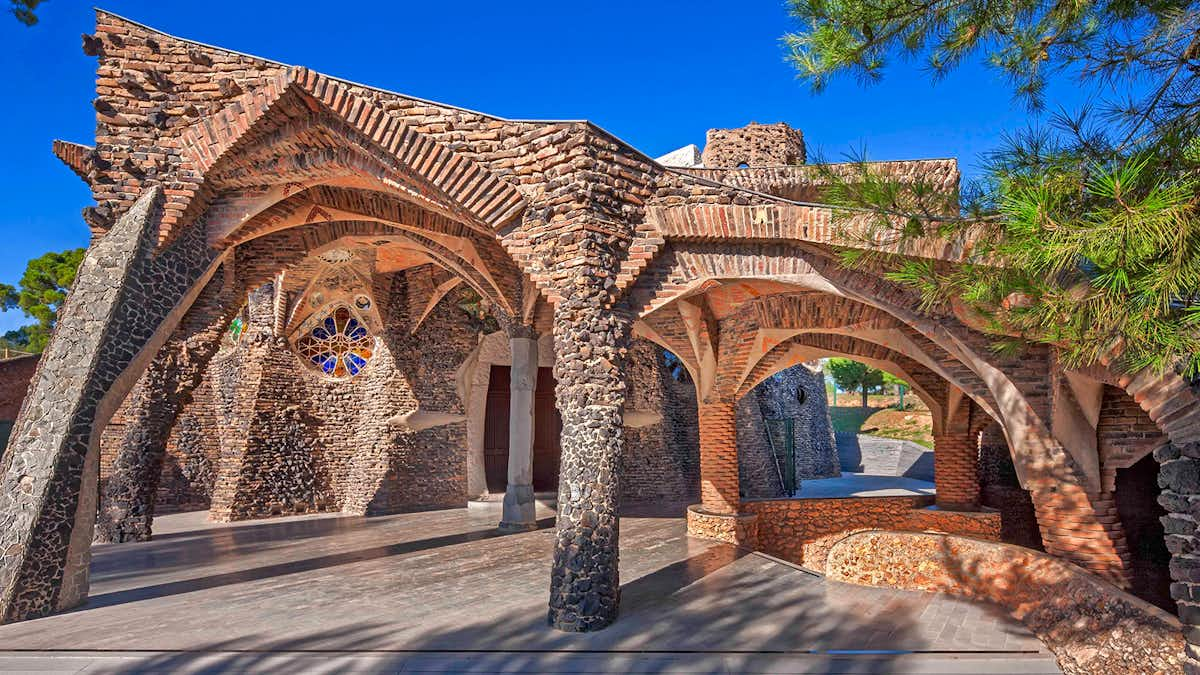
In the village of Santa Coloma de Cervello, situated 20 km from Barcelona's city center stands the magnificent Colonia Guell. Home to Gaudi's crypt, a UNESCO World Heritage Site, this colony was built in the early 1900’s as a Church for the workers living in the industrial village. This hidden gem also happens to be a precursor to the architectural techniques Gaudi used in the building of La Sagrada Familia. A replica of the original design now sits at a pavilion near the construction site and bears resemblance to La Sagrada Familia.
Why You Cannot Miss It
While most of Gaudi's buildings are brimming with tourists, Colonia Guell is relatively quieter. If you are looking to spend some quiet time admiring and keenly observing Gaudi’s work, there's no better place than Colonia Guell Barcelona. Moreover, Gaudi's Crypt at the Colonia Guell Church is a UNESCO World Heritage Site and bears Gaudi’s seal. Definitely worth the travel!
8. Casa Calvet
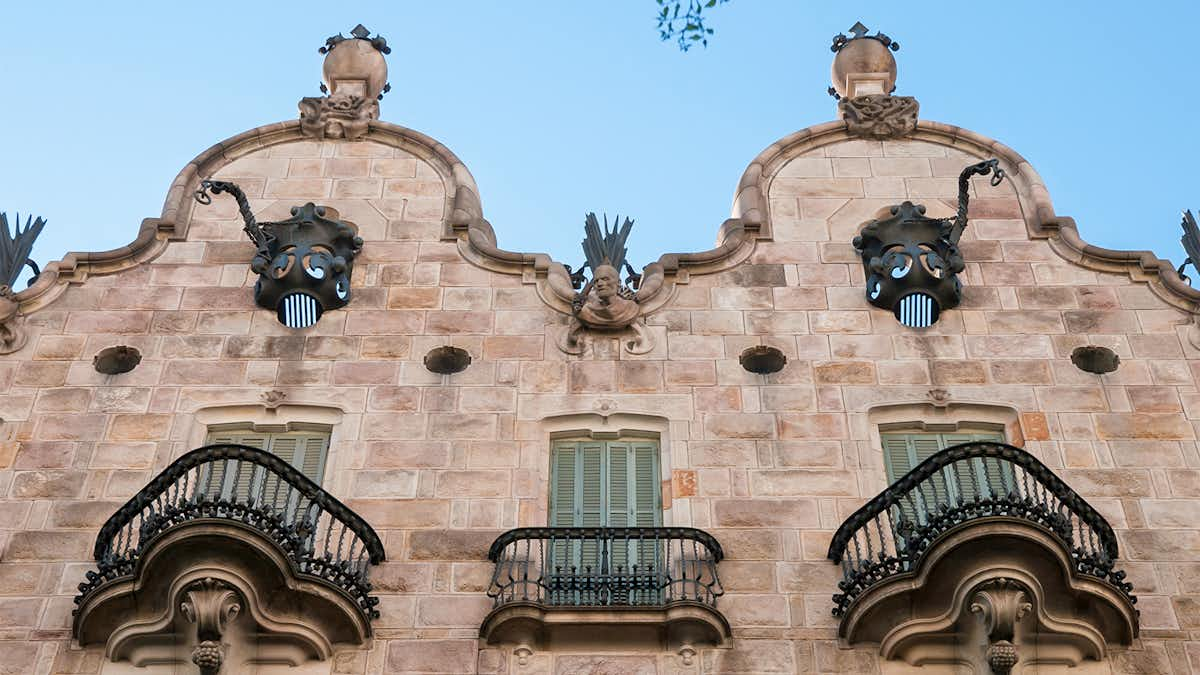
The Casa Calvet is Gaudí’s first work in the Eixample, an upcoming neighbourhood in the 1900s. The building was commissioned by the Calvet family, who ran a textile business and wanted a building that functioned both as a residential and a commercial property. The building is an amalgamation of historic Catalan Baroque elements like the Catalan ceiling, while also including modernist elements like the dream-like wrought iron balconies and rounded columns.
The Casa Calvet is located in the same neighbourhood as the more popular Casa Milà and Casa Batlló. Today, there is a restaurant by the same name ‘Casa Calvet’ that runs on the ground floor of the building. You can stop over there during your Gaudi in Barcelona tour, and enjoy a meal amidst the exquisite interiors designed by Gaudí himself!
Why You Cannot Miss It
The Casa Calvet won the best building of the year back in 1900 by the City Council of Barcelona. It is the only building that won recognition during the lifetime of Gaudí, and was well appreciated, setting a precedent for other buildings in the area. The sandstone exterior of the building is a mix of the flat walls and the elegant balconies which make it stand apart from the others in the area. The interiors and even the furniture have been designed by Gaudí himself, and are a treat for the eyes. The interiors especially hark back to the Baroque era, and one part you just cannot miss is a beautiful staircase with eye popping blue tiles lining it.
Short on time?
This guided tour is what you need! The Artistic Barcelona Tour takes you to all the important works of the modernist architect Antoni Gaudi that are scattered across the city. With transportation in an air-conditioned coach and a professional multilingual guide, explore the best of Gaudi's architecture in Barcelona.
9. Torres Bellesguard
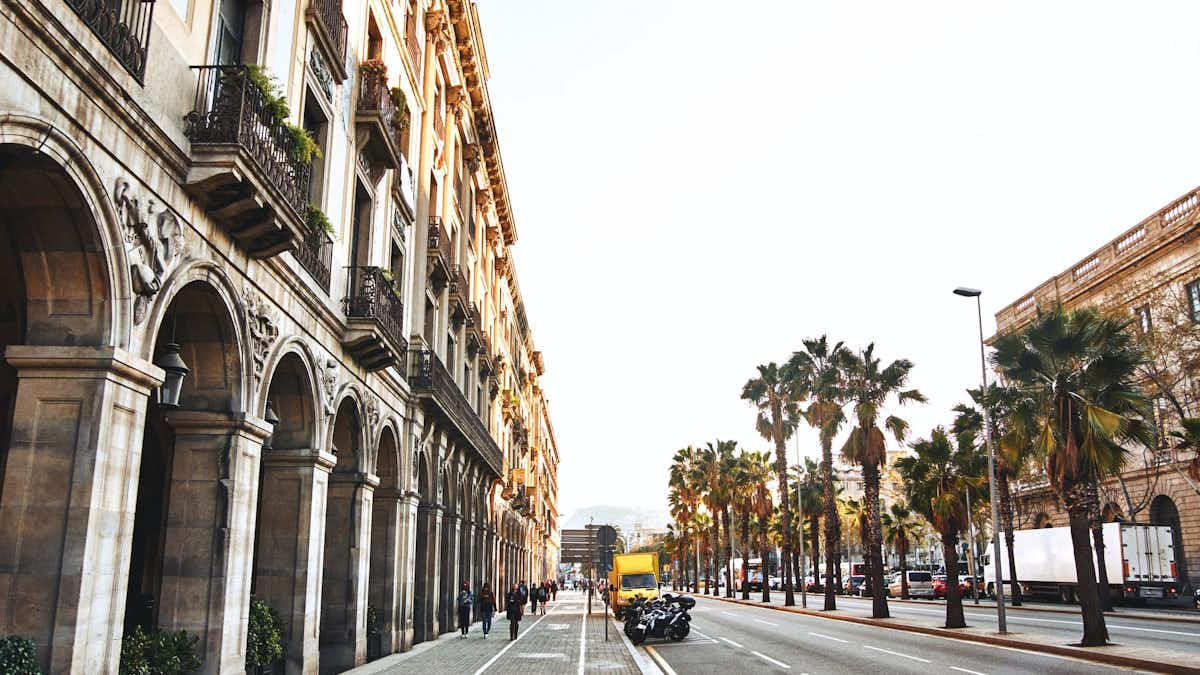
Torres Bellesguard gives the distinct impression of a medieval castle and was Gaudí’s attempt to pay homage to Catalan Gothic style of architecture. The stone structure finished in 1909 is in fact a residential home and a part of the property is open for visitors. Bellesguard is an important place in Catalan history and was the location of the palace of Martin I, the last King of the Barcelona dynasty. The word ‘Bellesguard’ itself means a good view referring to the strategic location of the building. Gaudí used architectural elements in the building of Torres Bellesguard which he would later use in the building of Sagrada Familia.
Why You Cannot Miss It
Torres Bellesguard is certainly one of the lesser known buildings of Gaudí in Barcelona but nevertheless it is a spectacular building worth seeing. The Gothic exterior of the building is Spartan and appears forbidding. However, the interior is a contrast with white walls and huge windows that maximise the natural light flooding in the building.
The exterior has all the elements of old Catalan Gothic design including the crenellations, elongated windows and a tall pointed tower with the typical Gaudí cross. It is a unique architectural style and a departure from the decorative and colourful style that had become synonymous with Gaudí.
10. Palau Güell
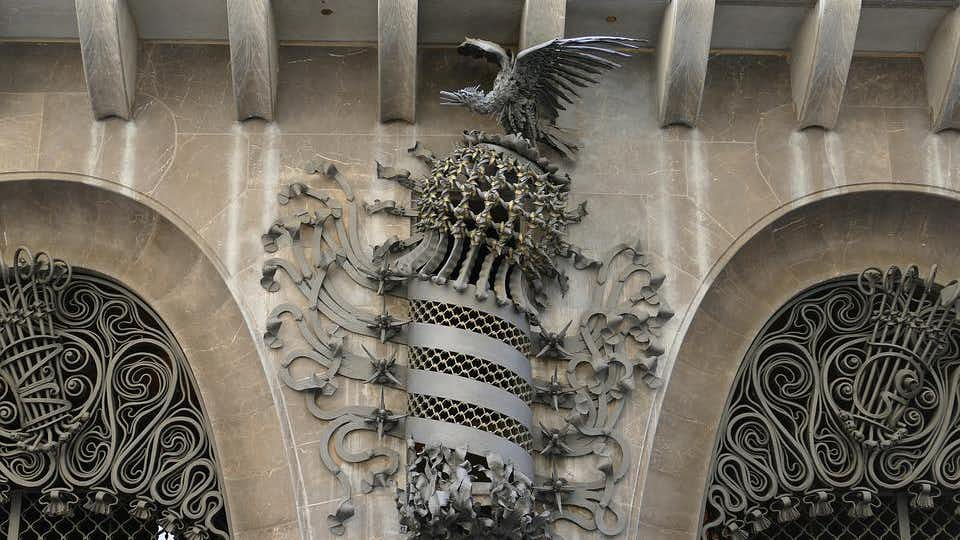
The Palau Güell (Palace Güell) is one of Gaudí’s best works in Barcelona. The urban palace built from 1885 to 1890 was commissioned by Eusebi Guell, Gaudí’s main patron. The palace is essentially a residential home of epic proportions. The sombre exterior of the building located on the Nou De La Rambla Street is no indicator of the ornate beauty within the walls. The Palace Güell is heavily inspired by Roman and Islamic architecture, and uses wrought iron, brick, and stone throughout the building. Each room and space in the building is meant to evoke a sense of grandeur and inspire awe in visitors to the grand Palace.
Why You Cannot Miss It
The Palace Güell is a UNESCO Heritage Site and a must-visit destination on your Gaudí Barcelona Tour. This is also the cheapest Gaudí building to enter! The atrium is one of the highlights of the Palace and runs three floors high with a symmetrical roof. The terrace of the Palace Güell is iconic and the twenty chimneys stand apart as works of art. Each colourful structure is covered with ceramic work, marble, porcelain, and sandstone to create a unique masterpiece. Some of the other striking spaces in the Palace Güell include the basement, with its monstrous brick pillars, and the ground floor with its wrought iron gates and its formidable stone work.
11. Gaudí House Museum
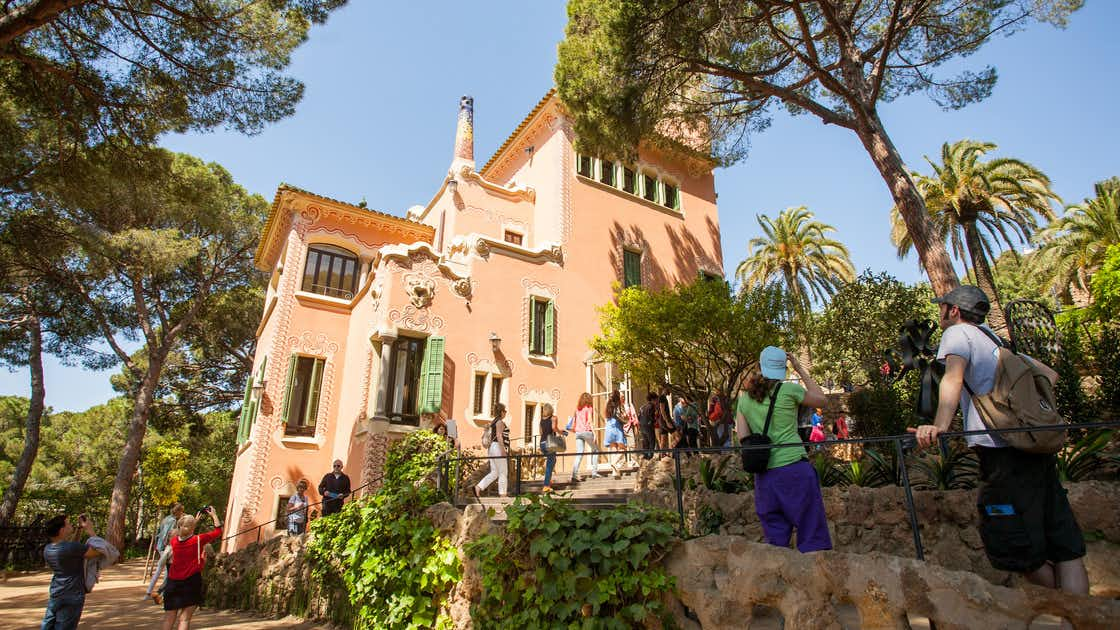
The Gaudí House Museum is an ode to the life and times of Antoni Gaudí, however, unlike the other buildings, it was not designed by Gaudí. The building was designed by his assistant, Francesc Berenguer i Mestres in the Catalan modernist style. The house was in fact a show house for the Park Güell housing development project, which never took off. This was one of the only two houses in the Park Güell, and was purchased by Gaudí’s father who stayed there till his death. Gaudí himself stayed there for twenty years before moving to Sagrada Familia to look over the construction. Today, the house is taken care by the Construction Board of Sagrada Familia and has been converted into a museum dedicated to Gaudí.
Why You Cannot Miss It
The Gaudí House Museum is a great place to understand the life of Antoni Gaudí. He was a maverick and an architectural genius like no other in the modern times. The house itself is beautiful, and its pink stucco walls stand pretty against the verdant gardens. The pink is contrasted against the green tile roofing and windows, and a pointed tower with beautiful trencadis ceramic that rises above the house. The museum houses furniture and other objects designed by Gaudí, as well as his personal effects. Located within the Park Güell, a visitor of the Gaudí trail must definitely pay homage to him at the Museum!
12. Colegio Teresiano de Barcelona

The College of Teresians is a striking institutional building, one of the lesser known projects of Gaudí in Barcelona. Its architecture is angular and its exterior includes more straight lines than any other of his projects. Predominantly made of brick and stone, the college is austere yet imposing in its demeanour. It was commissioned to Gaudí in 1889.
The building was to be used as a women’s boarding college, headquarters of the Teresian Congregation, and a study house for the nuns of the order. Gaudí had to work with tight budgets for the construction in order to stick to the congregation’s vow of poverty. This however did not stop him from being imaginative and including symbolism through the architecture.
Why You Cannot Miss It
The dramatic exterior of the red brick and stone building with crenellations and pinnacles lend the building a medieval vibe. Since Gaudí couldn’t experiment with expensive materials, he innovated with light and shadow. The parabolic archways on the first floor of the college are probably Gaudí’s best work with natural light and shadow. The iron-wrought gate is intricate and a masterpiece. Like other works of Gaudí in Barcelona, the college also has symbolism all over the place. At the college, the letter T has been used abundantly to symbolise ‘Saint Theresa’. The clean lines and stark contrasts of the interiors are a departure from Gaudí’s other work which makes this a must visit destination, especially for photographers and architects.
Self Guided Gaudi Tour Map - DIY Tour!
Looking to explore Gaudi's gems by yourself? Here's a map to give you an idea as to where each of Gaudi's buildings are located. Depending on your accomodation and the time you have in hand, chart your itinerary across the city.


